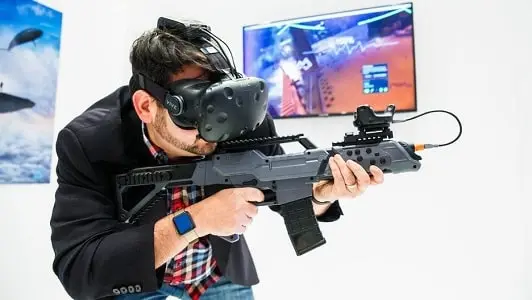Virtual reality (VR) is no longer a place. VR applications are rapidly evolving, and they are entering many sectors of the industry. From the healthcare to the automotive industry, VR is changing the way things are done, and expectations for the future are very high.
So how high are these expectations? IDC predicts that the virtual and augmented reality market will dramatically increase from just $ 9 billion last year to $ 215 billion by 2021. This incredible 118% compound annual growth rate will make VR one of the fastest-growing industries on the planet.
As we find ourselves almost halfway through the year, questions remain about the VR and video gaming industry. Although 2017 did not live up to expectations, VR gaming has learned a lot since its launch in 2014 and has come a long way. As brands continue to test and experiment in the VR realm, the arms race will continue to create the best. Products and experience for consumers.
What can we expect from video games when it comes to VR? Below are three trends to look forward to in 2018.
Headset Adjustment In Recent Years
As big-time brands (Samsung, HTC, Google, PlayStation, and Facebook) shift their focus to the VR market, consumers are still reluctant to buy for a variety of reasons. One of the major factors discouraging consumers is the price of goods.
While Sony has seen initial success with its cheap PSVR system (over 2 million headsets sold in 2017, other companies are pursuing it to make their headsets more affordable and accessible. With the advent of, the price war is likely to start. Companies will reduce each other to improve sales.
Not only are they realizing that the price is a flexible and saturated market, but they are also realizing that consumers are interested in ease of use and portability. With that in mind, stand-alone headsets will take the lead.
Headset
The standalone headset will allow users to easily attach the headset and use it without any installation or other complications. There are no wires, and all you need is a device connected to a headset (ie a mobile phone). Products like Oculus Go allow users to download games, apps, and other experiences from their phones and sync them to the headset. It does not need to be connected to a computer ready for VR, which requires products such as Oculus Rift.
VR Arcades Is A “New And Old” Development In The Video Games Industry:
The target demographic for video games keeps changing and evolving, but one thing remains the same. Gamers are looking for the best gaming experience possible. As VR continues to assert itself in the gaming world, players want to experience this new type of game, and many want to do it at an affordable price.
VR arcades are becoming more common in the gaming community. They are allowing players to fully experience VR gaming without having to buy their own headsets. The VR gaming industry as a service earned $ 286.7 million last year but could grow to $ 2.3 billion by 2020, according to SuperData Research. While not a groundbreaking contribution to the genre, VR Arcades serves a targeted and growing community.
Brooklyn has 42 headsets ranging from PlayStation VR, Oculus Rift, HTC Vive, and Samsung Gear to arcades like Yuki Poky, which opened in late 2017. Prices start at $ 25 for 30 minutes.
Virtual reality allows all kinds of gamers and all kinds of people who just want to have a good experience,” said George Cassius, head of business development at Yuki Poky
Educational Use Of VR Video Games
When you think of video games, you probably aren’t thinking of experiences that promote learning.
Just as teachers have different ways of teaching, so do students have different ways of learning. Teachers have found that interactive games can be a very effective way for students to absorb content in the classroom.
Companies like zSpace are developing “virtual instruction programs” that run on devices and VR classroom apps. These new inventions keep students engaged and interested, as well as create new types of instructional materials for teachers. The possibilities are endless, limited to the imagination of content creators. The education technology (EdTech) industry is already well aware of what VR can bring to the educational equation, as evidenced by the already rapid spending in space.
There are still a number of challenges that VR gaming developers need to overcome, but as popularity and demand increase, so will innovation. The video game industry has changed over the years, and gradually it has. VR gaming has not seen the rapid growth they had hoped for, but the future is bright and will become more mainstream before we know it.


